The Ultimate Guide to Choosing an Ultralight Camping Stove
Posted by Andy Neil on Jul 15, 2024
Camping stoves are an essential part of any hiking or camping adventure. They provide a reliable means to cook meals and boil water. Choosing the right stove can significantly enhance your outdoor experience. Let’s delve into the various types of camping stoves, their pros and cons, and the best scenarios for their use.
Before selecting any outdoor gear, it's crucial to consider your specific needs and priorities. While it's tempting to seek a one-size-fits-all solution, the reality is that most high-quality gear is designed for specific conditions and uses.
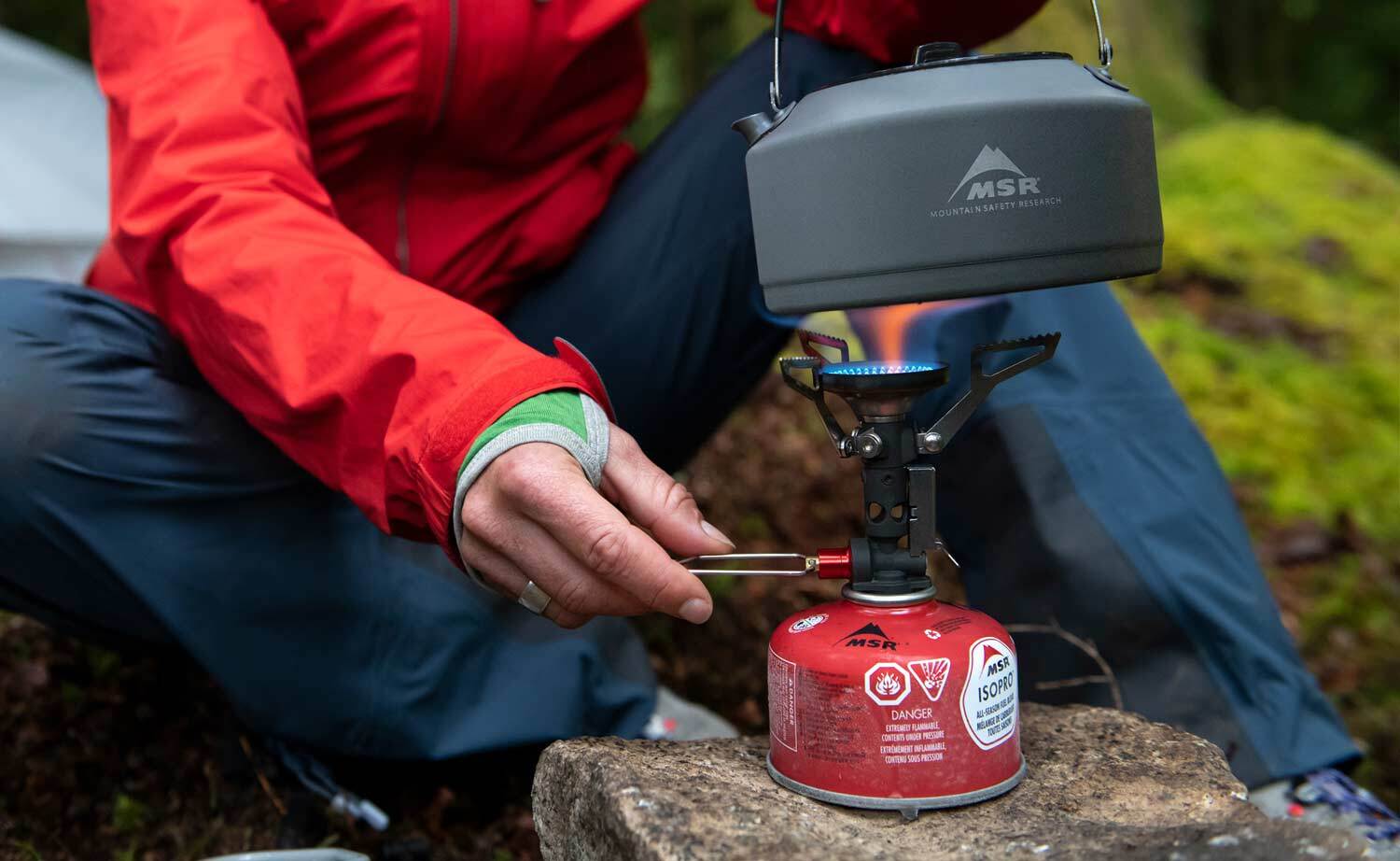
Gas Canister Stoves
Gas Canister Stoves are the most popular choice for hikers and campers. They use pre-pressurised canisters filled with a blend of propane and butane or isobutane, on to which the stove screws. They come in two main varieties, the traditional screw-on – a simple burner head that screws directly onto the gas canister, such as the MSR Pocket Rocket & SOTO WindMaster, and remote stoves, like the Robens Fire Bug Stove. To which the burner is connected to the gas canister via a hose. All canister stoves are renowned for their convenience, ease of use, and efficient performance in various conditions. You control the required heat, so they are superior if you intend to cook a “real” meal on them.
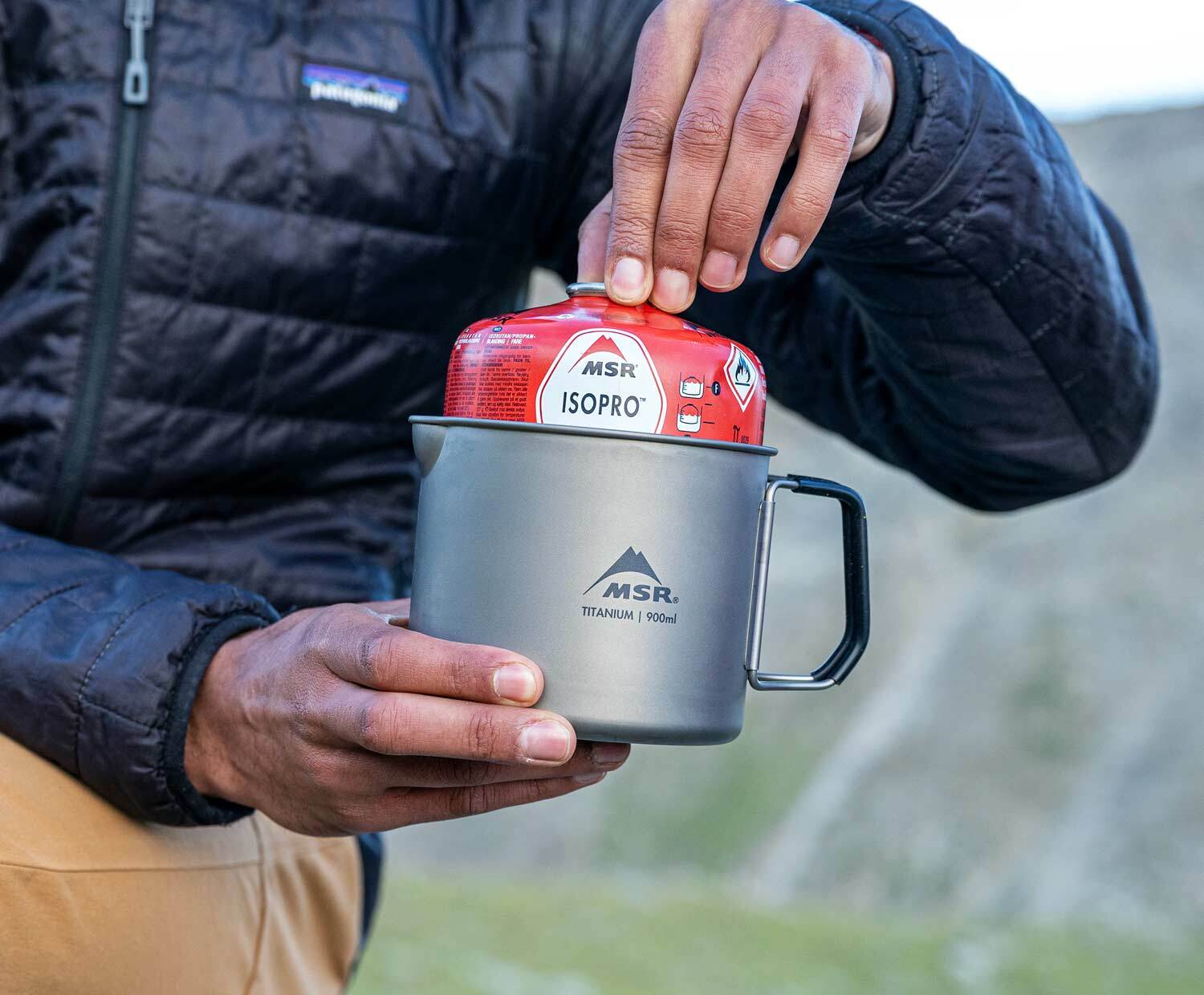
Advantages
✅ Ease of Use: Gas canister stoves are typically easy to ignite with either a built-in piezo igniter, or a generous flow of gas that quickly ignites with a spark or flame. They also, usually, require no priming or preheating.
✅ Portability: They are lightweight and compact, making them an excellent choice for backpackers.
✅ Control: They offer exceptional flame control, allowing for precise cooking.
✅ Clean Burning: These stoves burn cleanly, producing minimal soot and residue. The canister self-seals when you unscrew the stove — no spills or leaks.

Disadvantages
❌ Fuel Availability: Finding compatible canisters can be challenging in remote areas or internationally.
❌ Cold Weather Performance: Gas canisters can struggle in cold temperatures, decreasing pressure and performance.
❌ Waste: Empty canisters need to be disposed of properly.
❌ Lack of Stability – The arms may not be long enough to hold larger pots securely.
❌ Judging Fuel Consumption – It's hard to know how much gas is left inside a canister.
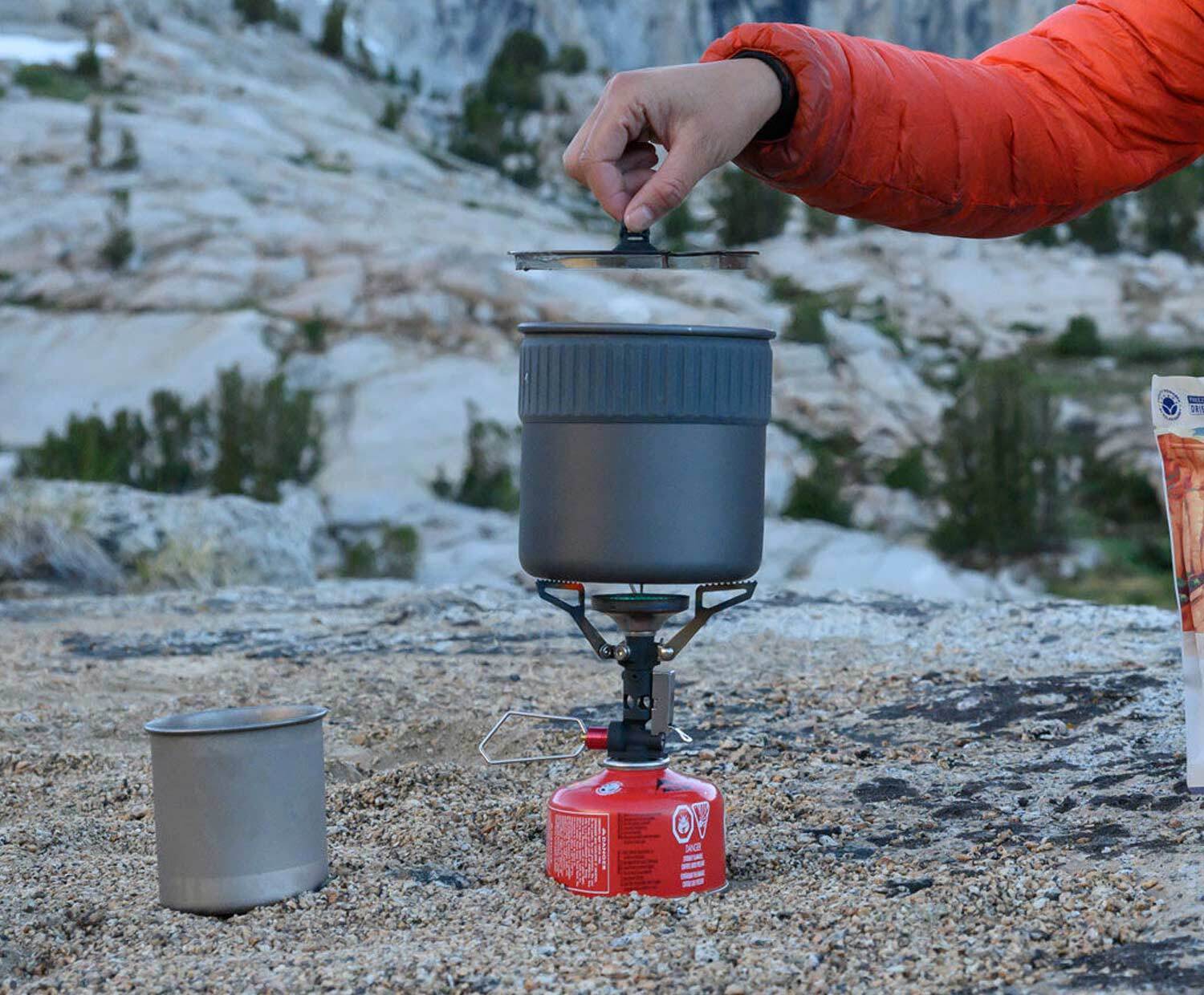
Best For
✔️ Short to medium-length trips or any length trip when gas canisters are going to be widely available.
✔️ Trips where weight and convenience are priorities.
✔️ Regions with moderate climates where cold weather performance is less of an issue.
✔️ Campers who prioritise ease of use and quick setup.
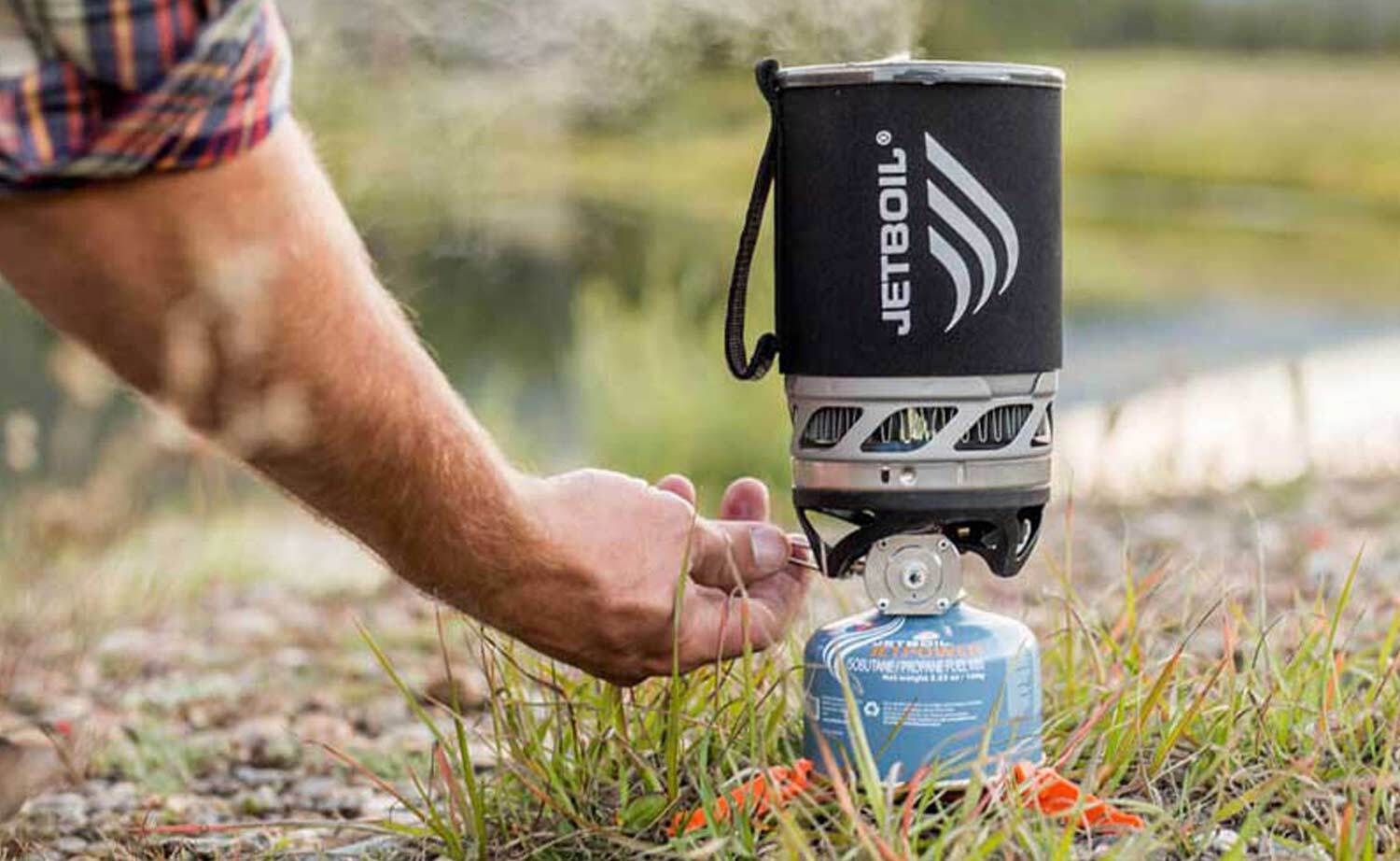
Heat Exchanger Stoves
Heat Exchanger Stoves, like the Jetboil MicroMo and the MSR WindBurner, are specialised gas canister stoves. They feature an integrated design, combining the stove, pot, and windscreen into one unit. They are the most fuel-efficient gas stove and will have the fastest boiling time. However, they are only great at boiling water, so they are not as appealing if you want to cook anything more complicated than soup.
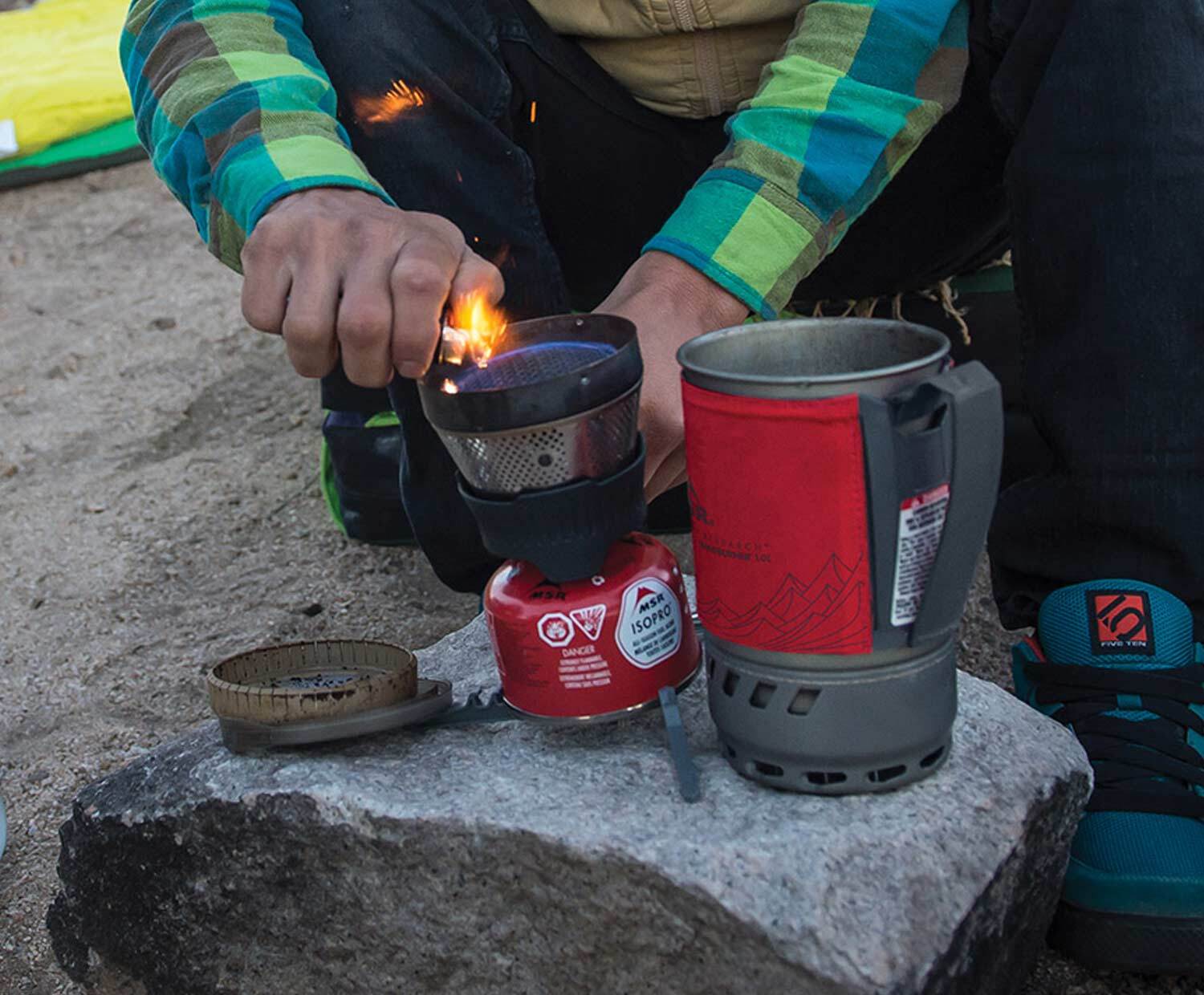
Advantages
✅ Efficiency: Enclosed designs maximise fuel efficiency and allow water to boil quickly.
✅ Wind Resistance: Built-in windscreens protect the flame, ensuring consistent performance in windy conditions.
✅ Integrated system is highly packable and easy to carry.
✅ Convenience: The all-in-one design simplifies setup and use.

Disadvantages
❌ Limited Cooking Versatility: These stoves are primarily designed for boiling water and may not be as effective for simmering or more complex cooking tasks.
❌ Cost: They tend to be more expensive than basic gas canister stoves.
❌ Compatibility: You are often limited to using the pot provided with the system; additional pots, or a frying pan, may not be compatible. You may have to buy a pan that is specifically designed to work with your stove.
❌ Bigger, Bulkier, & Heavier than their Gas Canister counterparts.
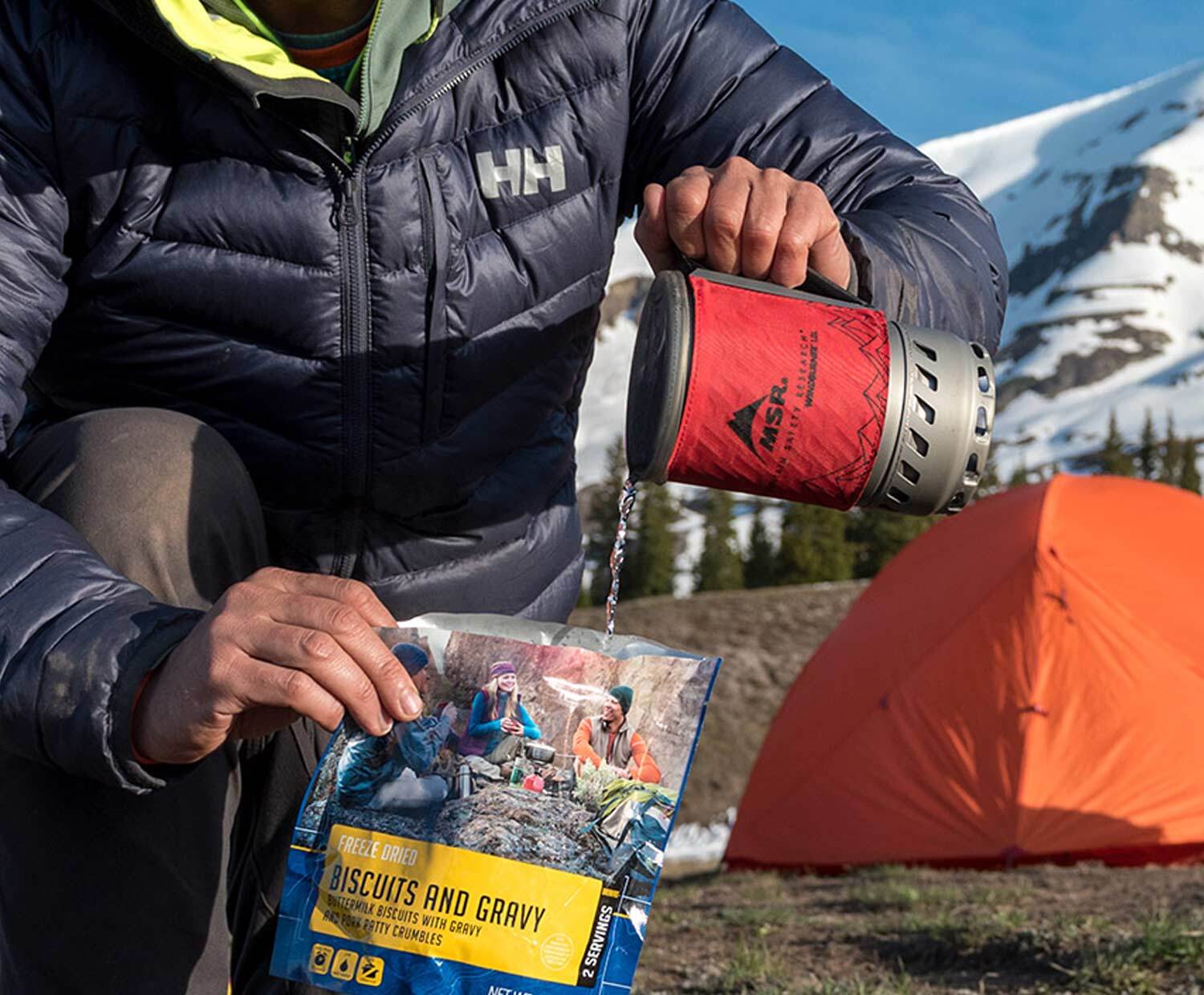
Best For
✔️ Backpackers who prioritise fast boil times and fuel efficiency.
✔️ Solo hikers or small groups who primarily need to boil water for dehydrated meals and beverages.
✔️ Environments where wind is a significant factor.

Meths Fuel Stoves
Meths Fuel Stoves (also known as alcohol stoves or spirit burners), such as the Gram-counter Gear Spirit Volcano or the Evernew EBY254 Titanium Alcohol Stove, use methanol or alcohol as fuel. These stoves are known for their simplicity, often consisting of a small burner with no moving parts. They also need a small pot stand and a windshield to perform optimally.

Advantages
✅ Lightweight: Typically, this is the lightest stove option available.
✅ Simple & Reliable: With no moving parts, there's little that can break or malfunction.
✅ Quiet Operation: They burn silently, enhancing the outdoor experience.
✅ Widely Available Fuel: Methanol or denatured alcohol is easy to find in most countries.
✅ Inexpensive: Both the stoves and fuel are generally cheap.

Disadvantages
❌ Low Heat Output: They have a lower BTU output than other stove types, resulting in slower cooking times.
❌ Wind Sensitivity: Performance can be significantly affected by wind without proper shielding.
❌ Fuel Efficiency: They may consume more fuel for the same task as other stove types.
❌ No Flame Control: The flame can't be easily adjusted once lit, making simmering difficult.
❌ Invisible Flame: The flame can be hard to see, posing a potential safety hazard.

Best For
✔️ Ultralight backpackers and thru-hikers prioritising weight savings.
✔️ Trips in areas where alcohol fuel is readily available.
✔️ Users who appreciate simplicity and reliability over speed and precise temperature control.
✔️ Fair weather camping where the wind is less of an issue.
✔️ Those on a budget looking for an inexpensive stove option.
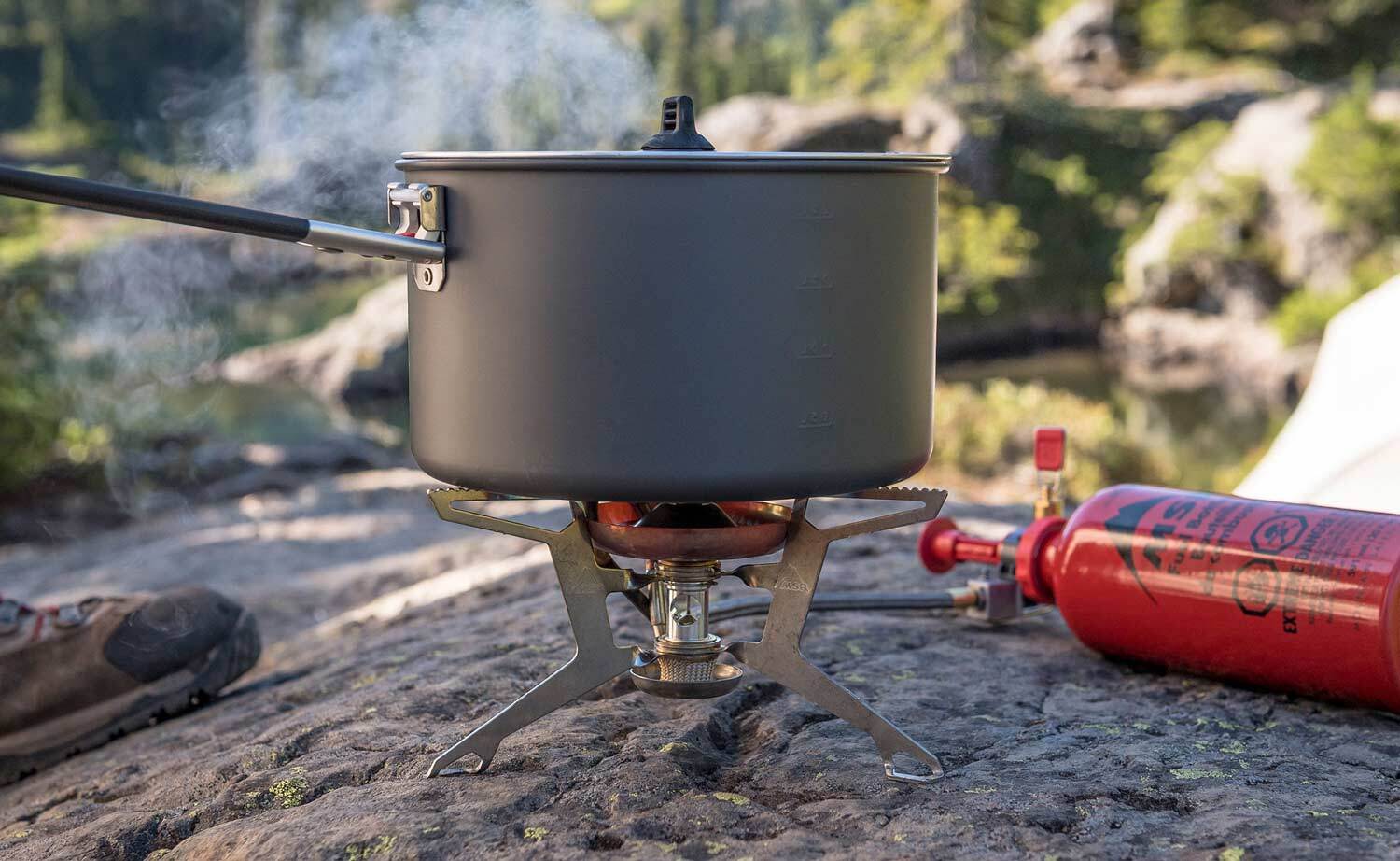
Liquid & Multi-fuel Stoves
Liquid Fuel Stoves, like the MSR Whisperlite or the SOTO StormBreaker, burn fuels such as white gas, paraffin (kerosene), petrol, white spirits, and diesel. They are highly versatile and perform well in various conditions, making them a favourite for international travellers and extreme adventurers. However, they are more complicated than any other stove and require maintenance to keep them burning correctly; they can also be noisy and may give off the smell of whatever fuel you are using.
View All Liquid & Multi-fuel Stoves

Advantages
✅ Fuel Availability: Liquid fuels are widely available and can be found globally.
✅ Cold Weather Performance: They perform exceptionally well in cold temperatures.
✅ Versatility: Suitable for various cooking tasks, from boiling to simmering.
✅ Economical: Fuel is often cheaper than gas canisters and can be carried in refillable bottles.
✅ Pre-pressurised Canisters*: Some, such as the Whisperlite Universal and SOTO StormBreaker, can also use pre-pressurised canisters.

Disadvantages
❌ Complexity: These stoves require priming and regular maintenance.
❌ Weight: Generally heavier and bulkier than canister stoves.
❌ Soot & Smell: Some fuels can produce soot and have a strong odour.

Best For
✔️ Long-term expeditions or international travel where fuel availability is a concern.
✔️ Extreme weather conditions, especially cold environments.
✔️ Campers who need a versatile stove for a variety of cooking tasks.

Solid Fuel Stoves
Solid Fuel Stoves, like the Gram-counter Gear Titanium Tablet Stove or the TOAKS Titanium Backpacking Wood Burning Stove, generate heat using various solid forms of fuel. There are some designed to use compact fuel tablets, others can also use wood, paper, and cardboard (any solid flammable material), which means you can find fuel virtually anywhere in a pinch. They are simple, lightweight, and highly reliable, making them a popular choice for quick overnighters and backup emergency kits.

Advantages
✅ Simplicity: Easy to use with no moving parts or maintenance required.
✅ Lightweight & Compact: Extremely portable and ideal for ultralight hiking.
✅ Stability: Fuel tablets are solid and do not spill.
✅ Fuel: Can be sourced on the trail in emergencies

Disadvantages
❌ Cooking Performance: Limited heat output and slower cooking times than other stove types.
❌ Residue: Some fuel tablets can leave residue on cookware.
❌ Fuel Availability: Tablets may be harder to find in some areas.
❌ Windscreens are often a necessity
❌ May leave marks or residue on the underside of pots
❌ An Open-flame Stove may be prohibited during fire bans or in specific areas.

Best For
✔️ Ultralight backpackers who need a minimalistic and reliable cooking solution.
✔️ Short trips where weight is a critical factor.
✔️ Emergency preparedness kits.
✔️ Bushcraft hobbyists
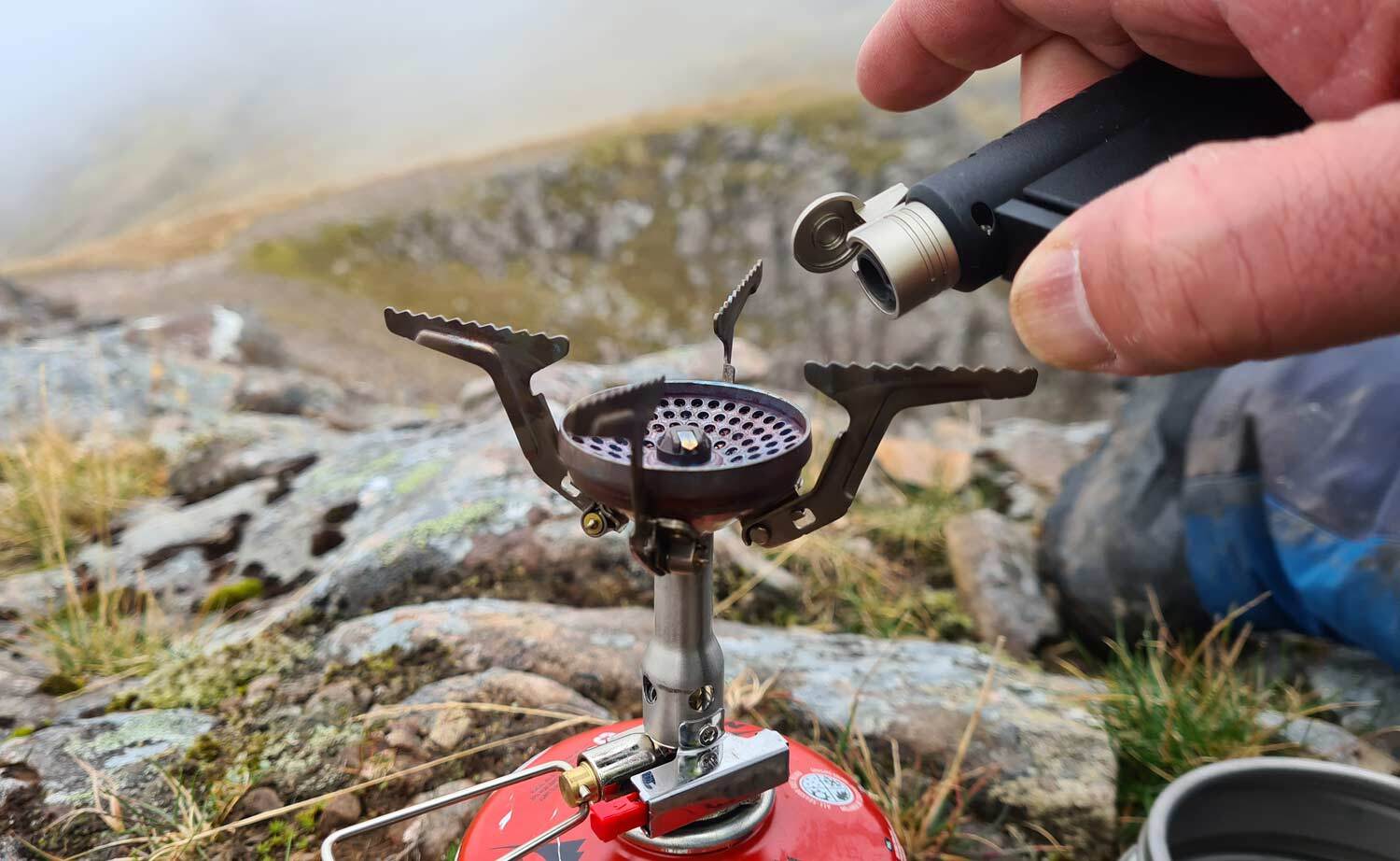
Accessories
Stove Accessories can significantly enhance your camping stove's functionality and convenience.
✔ Lighters are essential; even if your stove has an ignition switch, carrying a spare is always good practice. Cheap disposable ones will suffice, but more specialised, windproof, or rechargeable electric lighters are also available.
✔ A Flint and Steel offers a reliable and durable ignition method, especially in wet conditions.
✔ Pot Stands provide stability for your cookware and are essential for Meths Fuel Stoves, ensuring safe and even cooking.
✔ Windshields are crucial for maintaining flame efficiency in windy conditions, preventing heat loss and reducing fuel consumption.
✔ Gas Canister stands add stability to canister stoves, especially on uneven terrain.
✔ Maintenance kits for liquid and multi-fuel stoves are indispensable for long trips. They enable you to keep your stove in top working condition.
✔ Pot Grippers allow you to handle hot cookware safely, preventing burns and spills.
While sometimes overlooked, these accessories can significantly enhance the performance and safety of your camping stove setup, making your outdoor cooking experience more enjoyable and efficient.
View All Stove Accessories & Spare Parts


Conclusion
Choosing the right camping stove depends on various factors, including the type of trip, weather conditions, and personal preferences. Gas canister stoves are convenient, easy to use, and ideal for short to medium trips, or longer if you can reliably get gas in shops local to your planned route. Enclosed canister stoves, like a Jetboil stove, provide excellent efficiency and wind resistance, perfect for solo hikers or small groups who are mainly boiling water. Meth stoves are fantastic for short ultralight trips and longer international trips in milder climates. Liquid fuel stoves shine in extreme conditions and international travel, offering versatility and reliable performance. Solid fuel stoves, with their simplicity and minimal weight, cater to short trips, bushcraft hobbyists and emergencies.
By understanding the strengths and limitations of each type of stove, you can make an informed decision that will enhance your outdoor cooking experience and ensure a successful adventure.

|
||
 |
||
|
Andy Neil |
||
|
Andy has been a keen long-distance hiker and wild camping enthusiast since he completed the Cleveland Way in 2015. Since then, he has walked thousands of trail miles all over the UK and is an active member of the Wild Camping UK community, being an admin of the largest wild camping community on Facebook. He strongly advocates for responsible wild camping and believes it is important to leave no trace when camping in the wilderness. He joined the UOG team in 2021 and works as a website developer and content creator. |
||
Camping stoves are an essential part of any hiking or camping adventure. They provide a reliable means to cook meals and boil water. Choosing the right stove can significantly enhance your outdoor experience. Let’s delve into the various types of camping stoves, their pros and cons, and the best scenarios for their use. Before selecting any outdoor gear, it's crucial to consider your specific needs and priorities. While it's tempting to seek a one-size-fits-all solution, the reality is that most high-quality gear is designed for specific conditions and uses.
